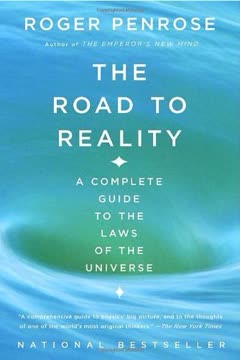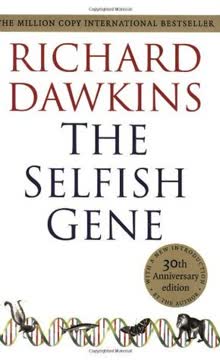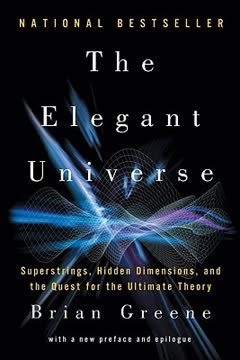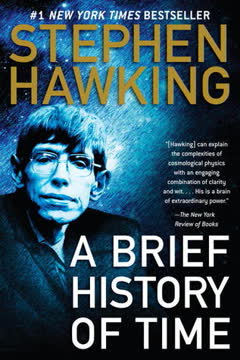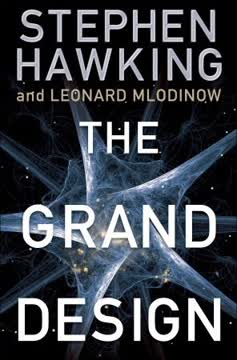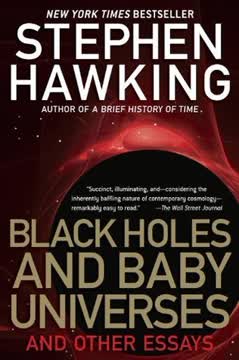ข้อสำคัญ
1. เวลาและอวกาศไม่ใช่สิ่งที่แน่นอนตายตัว
"เวลาถูกมองเสมือนเป็นเส้นทางรถไฟตรงที่เดินได้เพียงไปข้างหน้า หรือถอยหลังเท่านั้น"
มุมมองปฏิวัติวงการ ทฤษฎีสัมพัทธภาพของไอน์สไตน์ได้เปลี่ยนแปลงความเข้าใจเกี่ยวกับเวลาและอวกาศจากสิ่งที่ถือว่าแน่นอนและคงที่ มาเป็นมิติที่สัมพันธ์กันและเปลี่ยนแปลงได้ ขึ้นอยู่กับผู้สังเกตการณ์แต่ละคน
ข้อสรุปสำคัญ:
- เวลาไม่ใช่สิ่งสากล แต่เป็นเรื่องส่วนตัวของแต่ละผู้สังเกต
- ผู้สังเกตที่เคลื่อนที่ด้วยความเร็วต่างกันจะวัดเวลาแตกต่างกัน
- ความเร็วของแสงคงที่สำหรับผู้สังเกตทุกคน
หลักฐานจากการทดลอง เช่น การทดลองของไมเคิลสัน-มอร์ลีย์ แสดงให้เห็นว่าความเร็วของแสงไม่เปลี่ยนแปลงตามการเคลื่อนที่ของผู้สังเกต ท้าทายแนวคิดเดิมเกี่ยวกับเวลาและอวกาศที่แน่นอน
2. จักรวาลมีจุดเริ่มต้นและกำลังขยายตัว
"ถ้าจักรวาลถูกสร้างขึ้นโดยไม่มีหลักการห้ามซ้อนกันของควาร์ก ควาร์กจะไม่สามารถรวมตัวเป็นโปรตอนและนิวตรอนได้อย่างชัดเจน"
ทฤษฎีบิกแบง จักรวาลเริ่มต้นจากสภาวะที่ร้อนจัดและหนาแน่นอย่างยิ่งเมื่อประมาณ 13.8 พันล้านปีก่อน ขยายตัวอย่างรวดเร็วและพัฒนาไปสู่โครงสร้างที่ซับซ้อน เช่น กาแล็กซีและดวงดาว
วิวัฒนาการของจักรวาล:
- สภาวะเริ่มต้นร้อนและสม่ำเสมอมาก
- การเย็นตัวลงอย่างช้า ๆ ทำให้เกิดอะตอม
- การขยายตัวยังคงดำเนินต่อไป อาจไม่มีที่สิ้นสุด
- กาแล็กซีเกิดจากแรงดึงดูดของแรงโน้มถ่วง
การยืนยันจากการสังเกต การค้นพบของเอ็ดวิน ฮับเบิล ที่กาแล็กซีห่างไกลกำลังเคลื่อนที่ออกจากเรา เป็นหลักฐานเชิงประจักษ์ที่สนับสนุนโมเดลจักรวาลที่ขยายตัว
3. กลศาสตร์ควอนตัมเผยความไม่แน่นอนและความน่าจะเป็น
"กลศาสตร์ควอนตัมไม่ได้ทำนายผลลัพธ์ที่แน่นอนเพียงอย่างเดียวสำหรับการสังเกต แต่ทำนายผลลัพธ์ที่เป็นไปได้หลายอย่างพร้อมบอกความน่าจะเป็นของแต่ละผล"
จักรวาลที่มีความน่าจะเป็น แตกต่างจากฟิสิกส์คลาสสิก กลศาสตร์ควอนตัมเสนอว่าอนุภาคพื้นฐานมีสถานะที่เป็นไปได้หลายสถานะพร้อมกัน และผลลัพธ์ของการสังเกตมีความไม่แน่นอน
หลักการควอนตัมสำคัญ:
- อนุภาคสามารถอยู่ในหลายสถานะพร้อมกัน
- การสังเกตมีผลต่อสถานะของอนุภาค
- ไม่สามารถวัดตำแหน่งและความเร็วได้อย่างแม่นยำพร้อมกัน
- ความสุ่มเป็นส่วนหนึ่งของธรรมชาติ
ผลกระทบปฏิวัติ แนวคิดนี้ท้าทายมุมมองจักรวาลที่กำหนดไว้ล่วงหน้า ชี้ให้เห็นว่าความไม่แน่นอนเป็นคุณสมบัติพื้นฐานของความจริง
4. แรงโน้มถ่วงกำหนดโครงสร้างของจักรวาล
"แรงโน้มถ่วงเป็นแรงที่อ่อนที่สุดในบรรดาแรงทั้งสี่อย่างอย่างมาก มันอ่อนจนเราแทบไม่รู้สึกเลยถ้าไม่ใช่เพราะคุณสมบัติพิเศษสองอย่าง คือสามารถทำงานได้ในระยะไกล และเป็นแรงดึงดูดเสมอ"
อิทธิพลของแรงโน้มถ่วง แม้จะเป็นแรงพื้นฐานที่อ่อนที่สุด แต่แรงโน้มถ่วงมีบทบาทสำคัญในการกำหนดโครงสร้างจักรวาลผ่านผลสะสมและระยะไกล
ลักษณะของแรงโน้มถ่วง:
- มีผลต่อสสารทุกชนิดทั่วจักรวาล
- เป็นแรงดึงดูด ไม่ใช่แรงผลัก
- กำหนดโครงสร้างขนาดใหญ่ของจักรวาล
- สำคัญต่อความเข้าใจหลุมดำและวิวัฒนาการจักรวาล
ผลงานของไอน์สไตน์ ทฤษฎีสัมพัทธภาพทั่วไปเผยว่าแรงโน้มถ่วงคือความโค้งของกาลอวกาศ เปลี่ยนความเข้าใจจากแรงธรรมดาเป็นคุณสมบัติทางเรขาคณิตของจักรวาล
5. หลุมดำไม่ใช่สิ่งที่มืดสนิทจริง ๆ
"หลุมดำเป็นกรณีหนึ่งในประวัติศาสตร์วิทยาศาสตร์ที่ทฤษฎีถูกพัฒนาขึ้นอย่างละเอียดในรูปแบบคณิตศาสตร์ก่อนที่จะมีหลักฐานจากการสังเกต"
คุณสมบัติหลุมดำเชิงควอนตัม:
- ปล่อยรังสี (รังสีฮอว์กิง)
- มีอุณหภูมิจำกัด
- สามารถระเหยได้อย่างช้า ๆ
- เป็นสภาพแวดล้อมแรงโน้มถ่วงสุดขั้ว
ความก้าวหน้าทางทฤษฎี งานของฮอว์กิงแสดงให้เห็นว่ากลศาสตร์ควอนตัมอนุญาตให้หลุมดำปล่อยอนุภาค ท้าทายความเข้าใจเดิมเกี่ยวกับปรากฏการณ์จักรวาลนี้
ความสำคัญเชิงสังเกต หลุมดำเป็นห้องทดลองพิเศษสำหรับทดสอบทฤษฎีฟิสิกส์พื้นฐานเกี่ยวกับแรงโน้มถ่วง กลศาสตร์ควอนตัม และกาลอวกาศ
6. แรงพื้นฐานสามารถรวมเป็นหนึ่งเดียวได้
"ในที่สุด เราคาดหวังว่าจะพบทฤษฎีที่สมบูรณ์และสอดคล้องกัน ซึ่งรวมทฤษฎีย่อยเหล่านี้ทั้งหมดเป็นแบบจำลองเดียว"
การแสวงหาความเป็นหนึ่งเดียว นักวิทยาศาสตร์พยายามค้นหาทฤษฎีที่รวมแรงโน้มถ่วง แรงแม่เหล็กไฟฟ้า แรงนิวเคลียร์เข้ม และแรงนิวเคลียร์อ่อน เข้าไว้ด้วยกันในกรอบเดียวที่สมบูรณ์
แนวทางทางทฤษฎี:
- ทฤษฎีสตริง
- แบบจำลองแรงโน้มถ่วงเชิงควอนตัม
- ทฤษฎีเอกภาพใหญ่ (GUTs)
- การสำรวจมิติพิเศษ
ความท้าทาย ทฤษฎีปัจจุบันยังไม่สามารถประสานกลศาสตร์ควอนตัมกับแรงโน้มถ่วงในระดับจุลภาคได้อย่างสมบูรณ์
7. เข็มทิศของเวลาและเอนโทรปี
"ความไม่เป็นระเบียบเพิ่มขึ้นตามเวลา เพราะเราวัดเวลาในทิศทางที่ความไม่เป็นระเบียบเพิ่มขึ้น"
ทิศทางของเวลาในอุณหพลศาสตร์ จักรวาลมีแนวโน้มที่จะเพิ่มความไม่เป็นระเบียบ สร้างเข็มทิศของเวลาที่แยกอดีตออกจากอนาคตอย่างชัดเจน
เข็มทิศเวลาสำคัญ:
- เข็มทิศอุณหพลศาสตร์ (เอนโทรปีเพิ่ม)
- เข็มทิศจิตวิทยา (ความทรงจำก้าวหน้า)
- เข็มทิศจักรวาล (จักรวาลขยายตัว)
นัยทางปรัชญา การรับรู้และประสบการณ์ของเราเกี่ยวกับเวลาเชื่อมโยงอย่างลึกซึ้งกับแนวโน้มของจักรวาลที่เพิ่มความซับซ้อนและสุ่ม
8. จักรวาลอาจเป็นระบบปิดในตัวเอง
"จักรวาลจะเป็นระบบที่สมบูรณ์ในตัวเองและไม่ถูกกระทบจากสิ่งใดภายนอก มันจะไม่ถูกสร้างขึ้นหรือถูกทำลาย มันเพียงแค่ 'มีอยู่'"
ข้อเสนอไม่มีขอบเขต จักรวาลอาจมีอยู่โดยไม่มีสาเหตุภายนอก เกิดขึ้นจากความผันผวนเชิงควอนตัมที่มีความสอดคล้องทางคณิตศาสตร์ในตัวเอง
ข้อพิจารณาทางทฤษฎี:
- กาลอวกาศอาจมีขนาดจำกัดแต่ไม่มีขอบเขต
- ไม่จำเป็นต้องมีผู้สร้างภายนอก
- ถูกควบคุมโดยกฎคณิตศาสตร์ภายใน
มุมมองสุดโต่ง ท้าทายความเชื่อทางศาสนาและปรัชญาเกี่ยวกับจุดเริ่มต้นของจักรวาล
9. ทฤษฎีทางวิทยาศาสตร์คือแบบจำลองคณิตศาสตร์ของการสังเกต
"ทฤษฎีทางวิทยาศาสตร์เป็นเพียงแบบจำลองทางคณิตศาสตร์ที่เราสร้างขึ้นเพื่ออธิบายการสังเกตของเรา: มันมีอยู่เพียงในจิตใจของเราเท่านั้น"
วิธีการทางวิทยาศาสตร์ ทฤษฎีเป็นความพยายามของมนุษย์ในการอธิบายและทำนายปรากฏการณ์ที่สังเกตได้ด้วยคณิตศาสตร์ โดยยอมรับว่าทฤษฎีเหล่านี้เป็นสิ่งที่ยังเปลี่ยนแปลงและพัฒนาได้
ลักษณะของทฤษฎี:
- มีความสามารถในการทำนาย
- สามารถทดสอบได้ด้วยประจักษ์
- เปิดโอกาสให้แก้ไขปรับปรุง
- เป็นการประมาณความจริง
ความถ่อมตนทางความรู้ ยอมรับว่าความรู้ทางวิทยาศาสตร์เป็นกระบวนการเรียนรู้ที่ต่อเนื่อง ไม่ใช่ความจริงสมบูรณ์
10. การมีอยู่ของมนุษย์คือความบังเอิญอันน่าทึ่งของจักรวาล
"ข้อเท็จจริงที่น่าทึ่งคือค่าของตัวเลขเหล่านี้ดูเหมือนถูกปรับแต่งอย่างละเอียดเพื่อให้ชีวิตสามารถเกิดขึ้นได้"
หลักการมนุษย์เป็นศูนย์กลาง การดำรงอยู่ของเราขึ้นอยู่กับการตั้งค่าที่แม่นยำอย่างยิ่งของค่าคงที่จักรวาลและกฎฟิสิกส์
ความเป็นไปได้ที่แทบจะเป็นไปไม่ได้ของจักรวาล:
- การเปลี่ยนแปลงเล็กน้อยในค่าคงที่พื้นฐานจะทำให้ชีวิตไม่เกิดขึ้น
- โครงสร้างซับซ้อนเกิดจากสภาวะเริ่มต้นที่เรียบง่าย
- จิตสำนึกของมนุษย์เป็นผลลัพธ์ที่ไม่ธรรมดาของจักรวาล
การสะท้อนทางปรัชญา เน้นย้ำทั้งความสุ่มและความเป็นไปได้ที่จักรวาลถูกออกแบบมาอย่างมีจุดประสงค์บางอย่าง
อัปเดตล่าสุด:
FAQ
What's "A Brief History of Time" about?
- Exploration of the Universe: "A Brief History of Time" by Stephen Hawking explores the nature of the universe, discussing its origins, structure, and eventual fate.
- Complex Concepts Simplified: The book aims to explain complex scientific concepts like black holes, the big bang, and quantum mechanics in a way that is accessible to non-scientists.
- Unified Theory: Hawking discusses the quest for a unified theory that combines general relativity and quantum mechanics to explain all physical aspects of the universe.
- Philosophical Implications: It also delves into the philosophical implications of scientific discoveries, questioning the role of God and the nature of time.
Why should I read "A Brief History of Time"?
- Understanding the Universe: It provides a comprehensive overview of the universe's workings, making it essential for anyone interested in cosmology and physics.
- Accessible Science: Hawking's ability to simplify complex ideas makes it a great read for those without a scientific background.
- Intellectual Curiosity: The book challenges readers to think about profound questions regarding existence, time, and the universe.
- Cultural Impact: As a bestseller, it has influenced both scientific and popular culture, making it a significant work in modern literature.
What are the key takeaways of "A Brief History of Time"?
- Nature of Time: Time is not absolute and is intertwined with space, forming a four-dimensional space-time continuum.
- Black Holes: Black holes are regions where gravity is so strong that nothing, not even light, can escape, and they can emit radiation.
- Big Bang Theory: The universe began with a big bang, a singularity where all known laws of physics break down.
- Unified Theory: The search for a unified theory that combines general relativity and quantum mechanics is ongoing and crucial for understanding the universe.
What are the best quotes from "A Brief History of Time" and what do they mean?
- "If time travel is possible, where are the tourists from the future?" This quote highlights the paradoxes and challenges associated with the concept of time travel.
- "The universe doesn't allow perfection." It suggests that imperfections and uncertainties are inherent in the universe, aligning with the principles of quantum mechanics.
- "The boundary condition of the universe is that it has no boundary." This reflects Hawking's no-boundary proposal, suggesting the universe is finite but without edges or singularities.
- "We are just an advanced breed of monkeys on a minor planet of a very average star." This quote emphasizes the insignificance of human existence in the vast universe.
How does Stephen Hawking explain black holes in "A Brief History of Time"?
- Definition and Nature: Black holes are regions in space where gravity is so strong that nothing can escape from them, not even light.
- Event Horizon: The boundary around a black hole is called the event horizon, beyond which nothing can return.
- Hawking Radiation: Hawking theorizes that black holes can emit radiation due to quantum effects near the event horizon, leading to their eventual evaporation.
- Singularity: At the center of a black hole lies a singularity, a point of infinite density where the laws of physics as we know them cease to function.
What is the significance of the big bang theory in "A Brief History of Time"?
- Origin of the Universe: The big bang theory posits that the universe began from an extremely hot and dense singularity and has been expanding ever since.
- Cosmic Microwave Background: The theory is supported by the discovery of cosmic microwave background radiation, the afterglow of the big bang.
- Time and Space: It suggests that time and space themselves began with the big bang, challenging the notion of a universe existing eternally.
- Scientific and Philosophical Impact: The big bang theory has profound implications for understanding the universe's origin and the nature of time.
How does "A Brief History of Time" address the concept of time?
- Relative Time: Time is not absolute but relative, varying for different observers depending on their velocity and gravitational field.
- Imaginary Time: Hawking introduces the concept of imaginary time, which is indistinguishable from directions in space and helps in understanding the universe's boundaries.
- Arrow of Time: The book discusses the thermodynamic, psychological, and cosmological arrows of time, explaining why time seems to move in one direction.
- Time's Beginning and End: It explores the idea that time began with the big bang and may end with the big crunch or in black holes.
What is the role of quantum mechanics in "A Brief History of Time"?
- Uncertainty Principle: Quantum mechanics introduces uncertainty, meaning we cannot predict exact outcomes, only probabilities.
- Wave-Particle Duality: Particles can exhibit properties of both waves and particles, challenging classical physics' distinct categories.
- Quantum Gravity: The book discusses the need to unify quantum mechanics with general relativity to form a complete theory of quantum gravity.
- Impact on Cosmology: Quantum mechanics plays a crucial role in understanding the early universe and phenomena like black hole radiation.
How does Stephen Hawking approach the search for a unified theory in "A Brief History of Time"?
- Grand Unified Theories (GUTs): Hawking discusses attempts to unify the electromagnetic, weak, and strong nuclear forces into a single framework.
- Challenges with Gravity: The main challenge is incorporating gravity, described by general relativity, with quantum mechanics.
- String Theory: The book explores string theory as a potential candidate for a unified theory, where particles are one-dimensional strings.
- Ultimate Goal: The search for a unified theory aims to provide a complete understanding of the universe's fundamental forces and particles.
What is the anthropic principle as discussed in "A Brief History of Time"?
- Weak Anthropic Principle: It suggests that the universe's laws appear fine-tuned for life because only in such a universe could observers like us exist.
- Strong Anthropic Principle: This version posits that the universe must have properties that allow life to develop at some stage in its history.
- Role in Cosmology: The anthropic principle is used to explain why the universe has the conditions necessary for life, despite the vast number of possible configurations.
- Philosophical Implications: It raises questions about the role of chance and necessity in the universe's design and our place within it.
How does "A Brief History of Time" address the concept of imaginary time?
- Mathematical Tool: Imaginary time is used as a mathematical tool to simplify calculations in quantum mechanics and cosmology.
- No Boundary Proposal: Hawking's no boundary proposal uses imaginary time to suggest that the universe is finite but without boundaries or singularities.
- Distinction from Real Time: In imaginary time, the distinction between past and future disappears, unlike in real time, where time has a clear direction.
- Implications for the Universe: Imaginary time allows for a universe that is self-contained and without a beginning or end, challenging traditional notions of creation.
What are the philosophical implications of "A Brief History of Time"?
- Role of God: The book questions the necessity of a creator if the universe can be explained by a self-contained set of laws.
- Nature of Reality: It challenges traditional views of reality, suggesting that time and space are not absolute and may have different properties than perceived.
- Human Significance: Hawking emphasizes the insignificance of human life in the vast universe, prompting reflection on our place and purpose.
- Quest for Knowledge: The pursuit of a unified theory represents humanity's ongoing quest to understand the universe and our existence within it.
รีวิว
จากหนังสือวิทยาศาสตร์ยอดนิยมที่อธิบายแนวคิดฟิสิกส์ที่ซับซ้อน เช่น ทฤษฎีสัมพัทธภาพ กลศาสตร์ควอนตัม และจักรวาลวิทยา ให้ผู้อ่านทั่วไปเข้าใจได้ง่าย แม้จะได้รับคำชมในเรื่องความกระชับและชัดเจน แต่ก็มีผู้อ่านบางส่วนที่พบว่าส่วนหนึ่งของเนื้อหายากต่อการทำความเข้าใจอย่างลึกซึ้ง การเขียนที่ชัดเจนของฮอว์คิงและความพยายามในการตอบคำถามลึกซึ้งเกี่ยวกับจักรวาลได้รับการยกย่อง หนังสือเล่มนี้ครอบคลุมหัวข้อต่าง ๆ เช่น หลุมดำ บิ๊กแบง และการค้นหาทฤษฎีฟิสิกส์เอกภาพ แม้ว่าจะมีเสียงวิจารณ์เกี่ยวกับการคาดเดาทางปรัชญาของฮอว์คิงบ้าง แต่โดยรวมแล้วหนังสือเล่มนี้มีอิทธิพลอย่างมากในการทำให้ฟิสิกส์สมัยใหม่เป็นที่รู้จักในวงกว้าง
Similar Books
